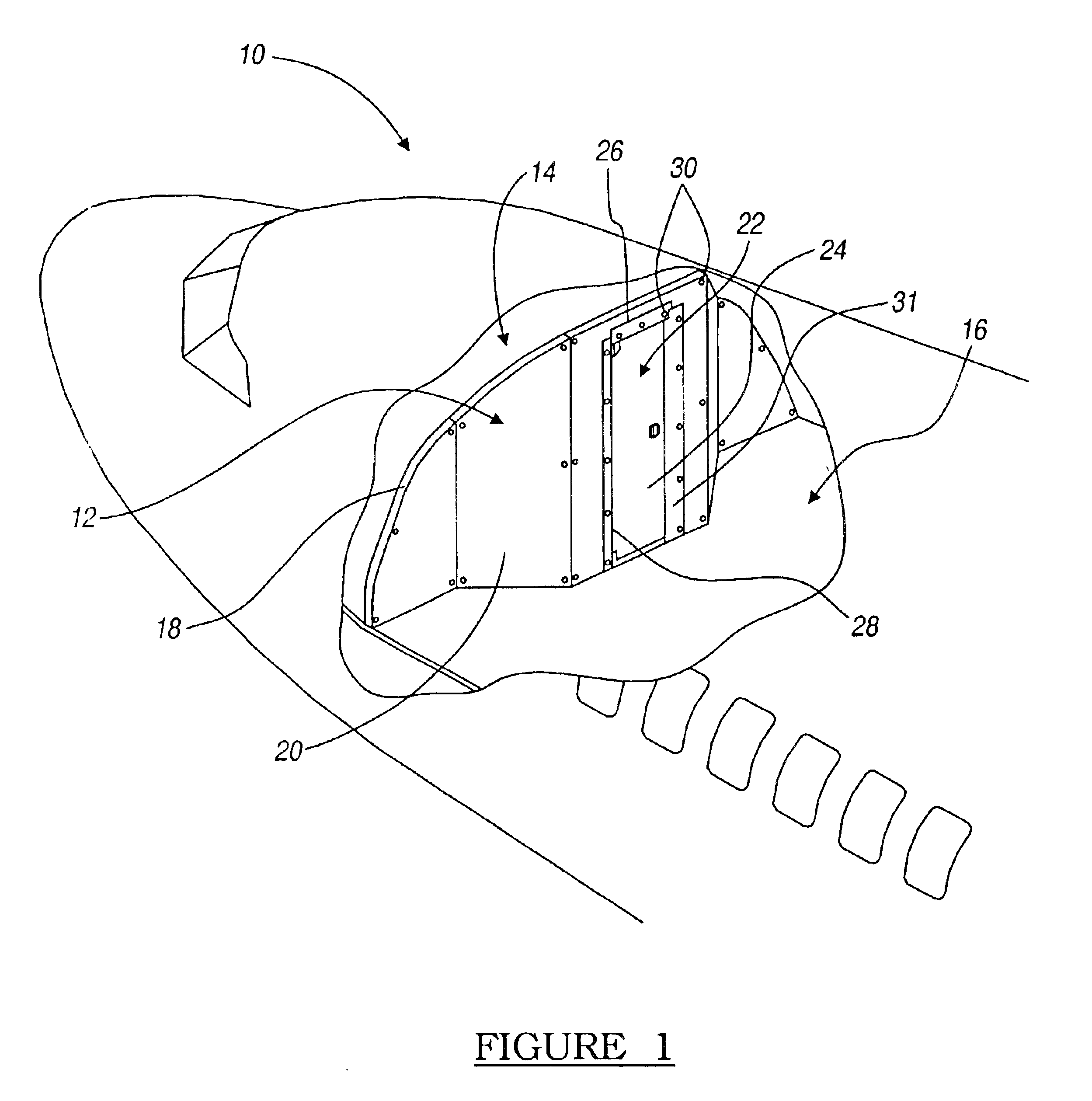Ballistic resistant cap nut
a technology of ballistic resistance and cap nut, which is applied in the direction of bolts, drilling pipes, vehicle safety arrangments, etc., can solve the problems of not being able to disassemble from the passenger cabin side of the flight deck door, not being able to resist tampering, and being heavier than needed
- Summary
- Abstract
- Description
- Claims
- Application Information
AI Technical Summary
Benefits of technology
Problems solved by technology
Method used
Image
Examples
Embodiment Construction
The following description of the preferred embodiments is merely exemplary in nature and is in no way intended to limit the invention, its application, or uses.
With reference to FIG. 1, an exemplary aircraft is generally indicated by reference numeral 10. The aircraft 10 includes a flight deck bulkhead 12 that separates a flight deck 14 from the passenger cabin 16. Flight deck bulkhead 12 includes a frame 18, panels 20, armor 31 and a door assembly 22 that are assembled to provide a barrier between the flight deck 14 and passenger cabin 16. Door assembly 22 includes a door 24, interconnected to a door frame 26 via a door hinge 28, for allowing control over access to the flight deck 14.
For ballistic and intrusion resistant applications, door assembly 22 and panel 20 may be strengthened with ballistic resistant materials. Generally, panel 20 and door frame 26 are overlapped by armor 31 to improve ballistic and intrusion resistance for flight deck bulkhead 12 and door assembly 22. A pl...
PUM
 Login to View More
Login to View More Abstract
Description
Claims
Application Information
 Login to View More
Login to View More - R&D
- Intellectual Property
- Life Sciences
- Materials
- Tech Scout
- Unparalleled Data Quality
- Higher Quality Content
- 60% Fewer Hallucinations
Browse by: Latest US Patents, China's latest patents, Technical Efficacy Thesaurus, Application Domain, Technology Topic, Popular Technical Reports.
© 2025 PatSnap. All rights reserved.Legal|Privacy policy|Modern Slavery Act Transparency Statement|Sitemap|About US| Contact US: help@patsnap.com



